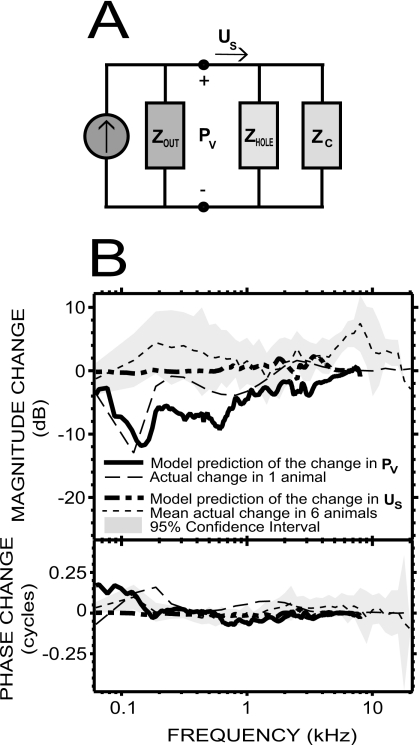Figure 7.
Model predictions of the effect of the vestibular hole. (A) Simple model of the middle ear as a Norton equivalent circuit, providing volume velocity US to the parallel combination of the inner ear load (ZC) and the impedance of the hole (Zhole). The Norton equivalent is composed of an ideal volume-velocity source and the output impedance of the middle ear (Zout). (B) Predictions of our simple model with a 180 μm diameter hole partially plugged by a pressure sensor (equivalent radius=53 μm) were at least qualitatively similar to the experimental changes we found in PV and US [see text and Figs. 3C, 4B]: The changes in PV were limited to low frequencies (solid and dashed-dotted lines); the changes in US were small (dashed and dotted lines).

